10 fascinating things to see in Potsdam
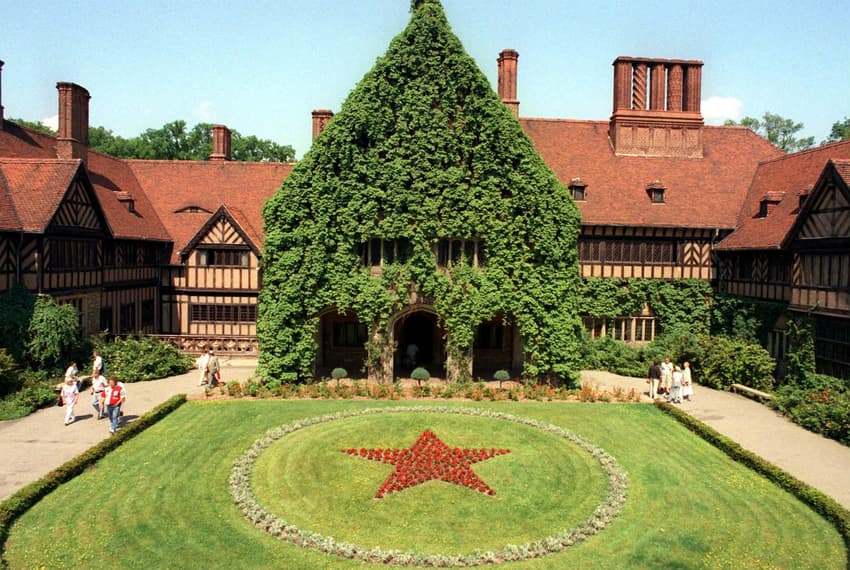
Only 35 kilometres from Germany's capital, Potsdam is the perfect day trip to tag on to your time in Berlin. From centuries-old Russian settlements to the most notable bridge of the Cold War, you'll be amazed at what Potsdam has to offer.
While Potsdam enjoys a slower pace of life than neighbouring Berlin, it is a capital in its own right; it is, after all, Brandenburg's capital and largest city. You may think the only thing interesting about this city is a park with a French-sounding name, but Potsdam is much more than that.
This city is packed full of history and culture dating back from the Prussian empire right up to recent decades and won't leave you disappointed.
Check out these ten fascinating things to do and see in Potsdam:
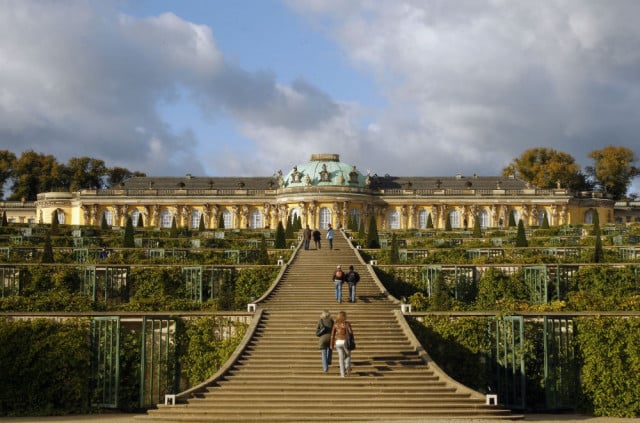
A view of the vineyard terraces in the Sanssouci Palace Park. Photo:DPA
A visit to the Sanssouci Palace is definitely a must when exploring Potsdam. Its breathtaking structures and wealth of greenery will transport you back to another era.
The palace was constructed at the orders of Frederick the Great between 1745 and 1747 to act as his summer residence and sanctuary. The name he gave it “Sanssouci” literally translates from the French “without a care”, for this was to be the place where he could relax and escape the neighbouring city of Berlin.
Frederick the Great is buried on one of the upper terraces in the park near to the graves of his much-loved greyhounds. On his grave is written: “Quand je serai là, je serai sans souci” - “When I shall be there, I shall be without a care”.
You really could spend hours wandering round the magnificent gardens and vineyard terraces or relaxing by the central fountain, but don’t miss out on the Belvedere auf dem Pfingstberg. The Belvedere, literally the beautiful view, is a villa within the Sanssouci Palace Park and offers a view over Potsdam’s palaces and greenery.
The park hosts an annual event called the Potsdam Palace Night, where you can enjoy a wonderful firework display to the sounds of classical and jazz music. This year’s event will take place on 17th and 18th August.
2. Dutch quarter
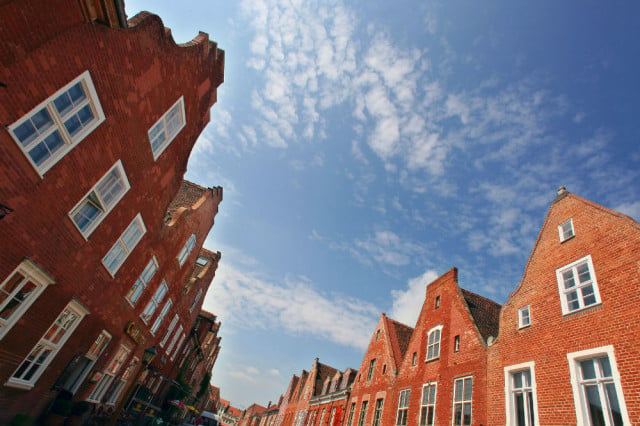
The red-brick houses typical of Potsdam's Dutch Quarter. Photo:DPA
Just a short walk from the centre of Potsdam you can find yourself transported to the Netherlands.
In the middle of the 18th century the then King Frederick William I required more skilled craftsmen near the capital. He recruited expert craftsmen from neighbouring Holland and, wanting them to feel at home in Potsdam, ordered 134 red-brick houses in the style of Dutch architecture to be built for the new workers to live in.
To this day it is the largest Dutch housing development outside the Netherlands and now is home to small boutique shops, cozy cafes, pubs, galleries and workshops. This vibrant area is affectionately known as “Little Amsterdam” and is a must to visit when in Potsdam.
The area hosts three different festivals throughout the year: the Tulip Festival in April, the Potters’ Market in September and the Dutch Christmas Market during the advent period.
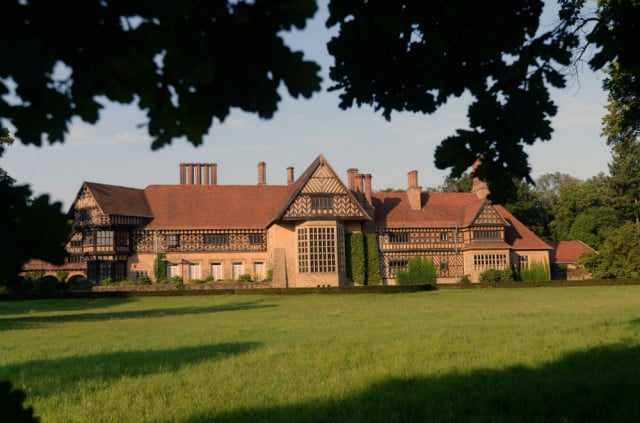
Cecilienhof Palace built in the English Tudor style. Photo:DPA
The Cecilienhof Palace is a relatively modern palace with a ton of history and significance. It was the last palace built in the style of an English Tudor manor house by the House of Hohenzollern, who were the ruling family of Prussia, and later Germany, until the end of the First World War.
The palace itself was built from 1913 to 1917 and construction was halted only momentarily from August 1914 to 1915 due to the breakout of World War I. It’s hard to imagine, especially given the way the war went for the German soldiers, that the building of this palace could take priority over the feeding of the troops at the front who were suffering from a gradual and devastating lack of supplies.
But the history of Cecilienhof didn’t end with the royal family. In 1945 it was the location of the Potsdam Conference where Harry S. Truman, Winston Churchill and Josef Stalin, the leaders of the USA, UK and USSR respectively, met to discuss the future of Europe and Asia after the end of the Second World War.
The conference symbolizes the end of World War II and the beginning of the Cold War and the walls and borders which would go up not far from this very palace were the indirect consequences of the decisions made here and thus are deeply intertwined with the palace’s history.
4. Alexandrowka
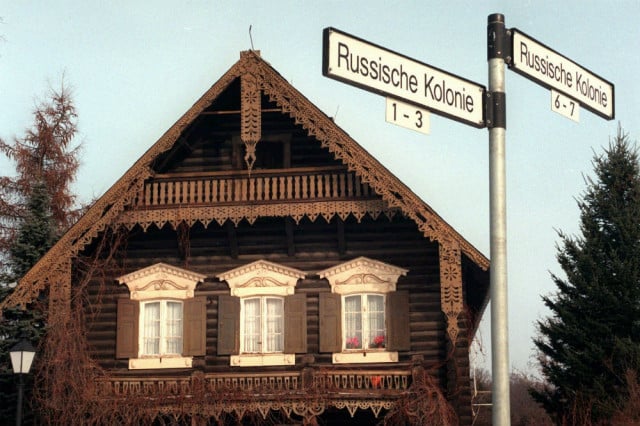
Signs pointing to the Russian colony Alexandrowka in front of a traditional wooden house. Photo:DPA
In the north of Potsdam there is a Russian colony called Alexandrowka, namely after the Russian tsar Alexander I. The colony consists of 13 wooden houses, farms and a Russian orthodox church. If you hadn’t just made the 20 minute walk from the Potsdam Brandenburg Gate, you’d be certain you were in a small village in the middle of Russia.
The story of this speck of Russia in Germany goes back to the first half of the 19th century. The Prussian king, Frederick William III, cherished a close friendship with the Russian tsar Alexander I. Frederick William decided to have this colony built to house 12 Russian singers of the First Prussian Regiment of the Guards.
The inhabitants, however, weren’t allowed to sell or rent their properties and the houses’ deeds could only be transferred to a male heir, otherwise the ownership went back to the crown.
A few descendants of the former inhabitants still live in Alexandrowka today, and now there is a museum you can visit to learn more about the history of the community.
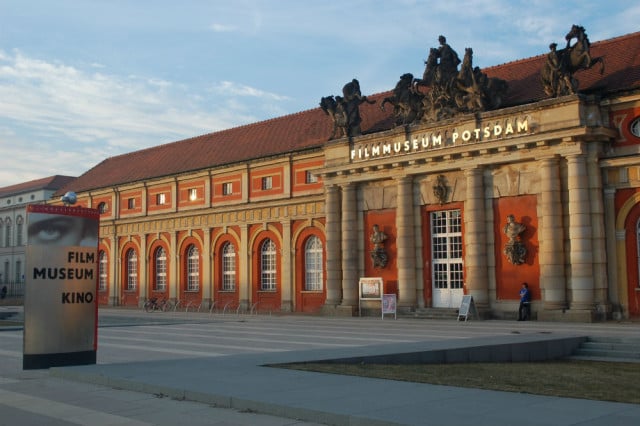
The Film Museum in the Stadtschloss Palace Potsdam. Photo:DPA
The Potsdam Film Museum was founded in 1981, originally as the German Democratic Republic (GDR) Film Museum, but since 1990 has presented the film history of a united Germany.
Located in the Stadtschloss Palace this is a great interactive, and immersive museum to spend an afternoon. You can wander through the rooms to learn how movies are made and in the popular casting box you can make your very own audition tape or digitally insert yourself into famous movie clips.
The museum also screens films every day for a reduced price. Check out their website to see what’s on.
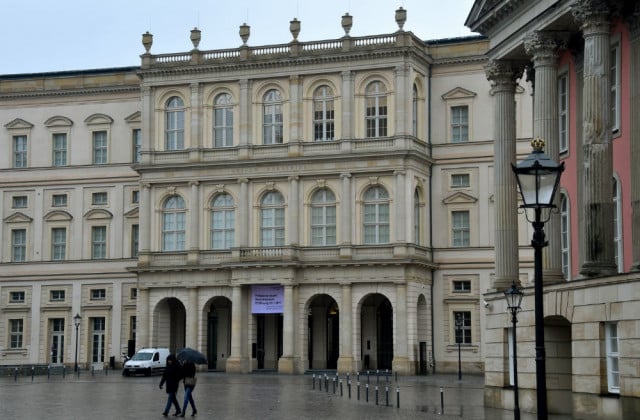
Potsdam's newest art museum the Barberini. Photo:DPA
The Barberini is a private art museum on Old Market Square in Potsdam built on the site of the former Barberini Palace which was destroyed by bombing during the Second World War. Construction began in 2013 and the new museum was opened in January 2017 to immediate success.
The museum holds a collection of artwork from the GDR and exhibitions, which range from the Old Masters to contemporary art, including pieces from Rodin, Monet and Edvard Munch.
The museum’s temporary exhibitions are a particular favourite with visitors, with current displays: Gerhard Richter: Abstraction; Nolde, Feininger, Nay: From Expression to Art Informel; and Congo Tales: Told by the People of Mbomo.
7. The Bridge of Spies
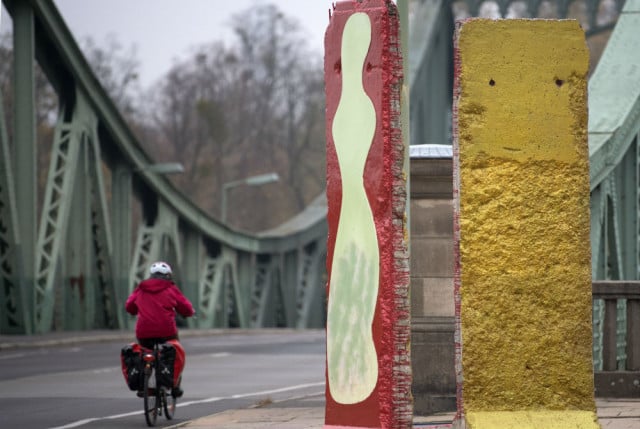
The Glienicke Bridge, famous in the Cold War as the site for the exchange of spies. Photo:DPA
The Bridge of Spies, otherwise known as Glienicke Bridge, was built in 1907 and connects the Berlin district of Wannsee with the capital of Brandenburg Potsdam over the Havel River.
However, this bridge didn’t serve its most notable purpose until the Cold War. Due to the area being a prominent border village between East and West Germany the bridge was used a number of times for the exchange of captured spies between the two states.
This bridge is a great place to visit for all Cold War history fanatics, but if you just fancy a great vantage point, then this bridge offers a view over the Glienicke castle grounds, Babelsberg Castle and the Sacrower Heilandskirche church.
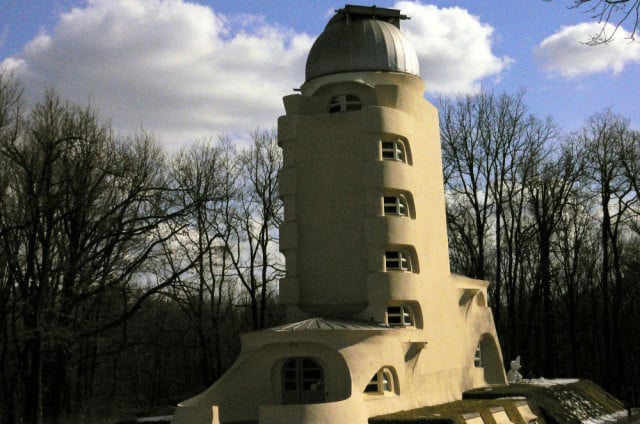
The Einstein Tower in the Albert Einstein Science Park. Photo:DPA
Looking a little out of place amongst the greenery surrounding it, the Einstein Tower is an astrophysical observatory in the Albert Einstein Science Park in Potsdam, which was constructed by the architecture Erich Mendelsohn between 1919 and 1922.
The tower named in Einstein’s honour was built to house a solar telescope designed by the astronomer Erwin Finlay-Freundlich to study and validate Einstein’s theory of relativity. The site became operational in 1924 and has been used ever since.
Einstein, himself, never actually worked there but he gave his blessing to its construction and usage.
9. Brandenburg Gate
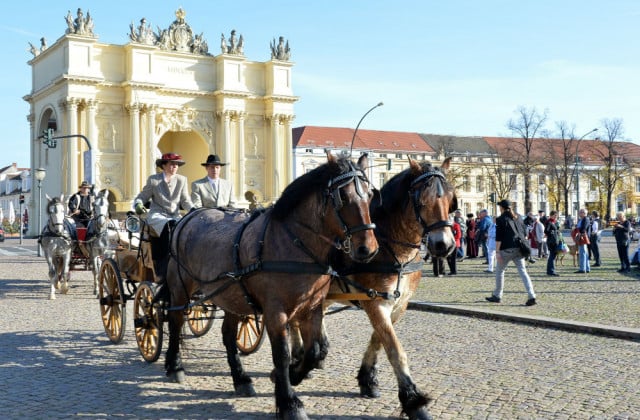
House-drawn carriages in front of the original Brandenburg Gate in Potsdam. Photo:DPA
In the centre of Luisenplatz, in downtown Potsdam, stands the Brandenburg Gate. Not a mock-up of Berlin’s grand gate on Pariser Platz, but the original.
Potsdam, like all German cities, used to have a wall which ran around the perimeter of the city with a entrance gate. In 1770, after claiming victory in the Seven Years’ Wa,r Frederick II of Prussia had a new triumphal arch replace the existing wooden gate.
This gate marked not only the entrance into Potsdam, but the entrance into Brandenburg itself. Built around 20 years before its rival in Berlin, this gate has a more demure charm, set amongst Potsdam’s beautiful old buildings.
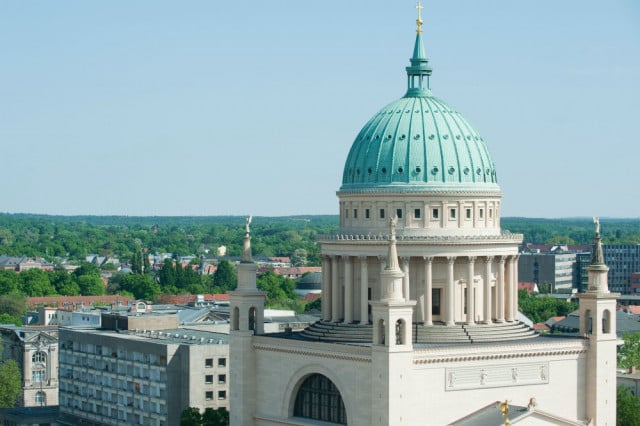
St. Nicolas' Church on Old Market Square in Potsdam. Photo:DPA
St. Nicolas’ Church on Old Market Square is a church like no other. It’s history dates all the way back to the 13th century but was built to look as we know it today in 1721. The church was badly damaged during the air raids in World War II and by Soviet artillery, but was re-consecrated in 1981.
In addition to the normal church services, many concerts are held in the church, when you can also marvel at the beautiful interiors.
A new viewing platform in now open during summer months to take in the sights of the city from on high.
Comments
See Also
While Potsdam enjoys a slower pace of life than neighbouring Berlin, it is a capital in its own right; it is, after all, Brandenburg's capital and largest city. You may think the only thing interesting about this city is a park with a French-sounding name, but Potsdam is much more than that.
This city is packed full of history and culture dating back from the Prussian empire right up to recent decades and won't leave you disappointed.
Check out these ten fascinating things to do and see in Potsdam:

A view of the vineyard terraces in the Sanssouci Palace Park. Photo:DPA
A visit to the Sanssouci Palace is definitely a must when exploring Potsdam. Its breathtaking structures and wealth of greenery will transport you back to another era.
The palace was constructed at the orders of Frederick the Great between 1745 and 1747 to act as his summer residence and sanctuary. The name he gave it “Sanssouci” literally translates from the French “without a care”, for this was to be the place where he could relax and escape the neighbouring city of Berlin.
Frederick the Great is buried on one of the upper terraces in the park near to the graves of his much-loved greyhounds. On his grave is written: “Quand je serai là, je serai sans souci” - “When I shall be there, I shall be without a care”.
You really could spend hours wandering round the magnificent gardens and vineyard terraces or relaxing by the central fountain, but don’t miss out on the Belvedere auf dem Pfingstberg. The Belvedere, literally the beautiful view, is a villa within the Sanssouci Palace Park and offers a view over Potsdam’s palaces and greenery.
The park hosts an annual event called the Potsdam Palace Night, where you can enjoy a wonderful firework display to the sounds of classical and jazz music. This year’s event will take place on 17th and 18th August.
2. Dutch quarter

The red-brick houses typical of Potsdam's Dutch Quarter. Photo:DPA
Just a short walk from the centre of Potsdam you can find yourself transported to the Netherlands.
In the middle of the 18th century the then King Frederick William I required more skilled craftsmen near the capital. He recruited expert craftsmen from neighbouring Holland and, wanting them to feel at home in Potsdam, ordered 134 red-brick houses in the style of Dutch architecture to be built for the new workers to live in.
To this day it is the largest Dutch housing development outside the Netherlands and now is home to small boutique shops, cozy cafes, pubs, galleries and workshops. This vibrant area is affectionately known as “Little Amsterdam” and is a must to visit when in Potsdam.
The area hosts three different festivals throughout the year: the Tulip Festival in April, the Potters’ Market in September and the Dutch Christmas Market during the advent period.

Cecilienhof Palace built in the English Tudor style. Photo:DPA
The Cecilienhof Palace is a relatively modern palace with a ton of history and significance. It was the last palace built in the style of an English Tudor manor house by the House of Hohenzollern, who were the ruling family of Prussia, and later Germany, until the end of the First World War.
The palace itself was built from 1913 to 1917 and construction was halted only momentarily from August 1914 to 1915 due to the breakout of World War I. It’s hard to imagine, especially given the way the war went for the German soldiers, that the building of this palace could take priority over the feeding of the troops at the front who were suffering from a gradual and devastating lack of supplies.
But the history of Cecilienhof didn’t end with the royal family. In 1945 it was the location of the Potsdam Conference where Harry S. Truman, Winston Churchill and Josef Stalin, the leaders of the USA, UK and USSR respectively, met to discuss the future of Europe and Asia after the end of the Second World War.
The conference symbolizes the end of World War II and the beginning of the Cold War and the walls and borders which would go up not far from this very palace were the indirect consequences of the decisions made here and thus are deeply intertwined with the palace’s history.
4. Alexandrowka

Signs pointing to the Russian colony Alexandrowka in front of a traditional wooden house. Photo:DPA
In the north of Potsdam there is a Russian colony called Alexandrowka, namely after the Russian tsar Alexander I. The colony consists of 13 wooden houses, farms and a Russian orthodox church. If you hadn’t just made the 20 minute walk from the Potsdam Brandenburg Gate, you’d be certain you were in a small village in the middle of Russia.
The story of this speck of Russia in Germany goes back to the first half of the 19th century. The Prussian king, Frederick William III, cherished a close friendship with the Russian tsar Alexander I. Frederick William decided to have this colony built to house 12 Russian singers of the First Prussian Regiment of the Guards.
The inhabitants, however, weren’t allowed to sell or rent their properties and the houses’ deeds could only be transferred to a male heir, otherwise the ownership went back to the crown.
A few descendants of the former inhabitants still live in Alexandrowka today, and now there is a museum you can visit to learn more about the history of the community.

The Film Museum in the Stadtschloss Palace Potsdam. Photo:DPA
The Potsdam Film Museum was founded in 1981, originally as the German Democratic Republic (GDR) Film Museum, but since 1990 has presented the film history of a united Germany.
Located in the Stadtschloss Palace this is a great interactive, and immersive museum to spend an afternoon. You can wander through the rooms to learn how movies are made and in the popular casting box you can make your very own audition tape or digitally insert yourself into famous movie clips.
The museum also screens films every day for a reduced price. Check out their website to see what’s on.

Potsdam's newest art museum the Barberini. Photo:DPA
The Barberini is a private art museum on Old Market Square in Potsdam built on the site of the former Barberini Palace which was destroyed by bombing during the Second World War. Construction began in 2013 and the new museum was opened in January 2017 to immediate success.
The museum holds a collection of artwork from the GDR and exhibitions, which range from the Old Masters to contemporary art, including pieces from Rodin, Monet and Edvard Munch.
The museum’s temporary exhibitions are a particular favourite with visitors, with current displays: Gerhard Richter: Abstraction; Nolde, Feininger, Nay: From Expression to Art Informel; and Congo Tales: Told by the People of Mbomo.
7. The Bridge of Spies

The Glienicke Bridge, famous in the Cold War as the site for the exchange of spies. Photo:DPA
The Bridge of Spies, otherwise known as Glienicke Bridge, was built in 1907 and connects the Berlin district of Wannsee with the capital of Brandenburg Potsdam over the Havel River.
However, this bridge didn’t serve its most notable purpose until the Cold War. Due to the area being a prominent border village between East and West Germany the bridge was used a number of times for the exchange of captured spies between the two states.
This bridge is a great place to visit for all Cold War history fanatics, but if you just fancy a great vantage point, then this bridge offers a view over the Glienicke castle grounds, Babelsberg Castle and the Sacrower Heilandskirche church.

The Einstein Tower in the Albert Einstein Science Park. Photo:DPA
Looking a little out of place amongst the greenery surrounding it, the Einstein Tower is an astrophysical observatory in the Albert Einstein Science Park in Potsdam, which was constructed by the architecture Erich Mendelsohn between 1919 and 1922.
The tower named in Einstein’s honour was built to house a solar telescope designed by the astronomer Erwin Finlay-Freundlich to study and validate Einstein’s theory of relativity. The site became operational in 1924 and has been used ever since.
Einstein, himself, never actually worked there but he gave his blessing to its construction and usage.
9. Brandenburg Gate

House-drawn carriages in front of the original Brandenburg Gate in Potsdam. Photo:DPA
In the centre of Luisenplatz, in downtown Potsdam, stands the Brandenburg Gate. Not a mock-up of Berlin’s grand gate on Pariser Platz, but the original.
Potsdam, like all German cities, used to have a wall which ran around the perimeter of the city with a entrance gate. In 1770, after claiming victory in the Seven Years’ Wa,r Frederick II of Prussia had a new triumphal arch replace the existing wooden gate.
This gate marked not only the entrance into Potsdam, but the entrance into Brandenburg itself. Built around 20 years before its rival in Berlin, this gate has a more demure charm, set amongst Potsdam’s beautiful old buildings.

St. Nicolas' Church on Old Market Square in Potsdam. Photo:DPA
St. Nicolas’ Church on Old Market Square is a church like no other. It’s history dates all the way back to the 13th century but was built to look as we know it today in 1721. The church was badly damaged during the air raids in World War II and by Soviet artillery, but was re-consecrated in 1981.
In addition to the normal church services, many concerts are held in the church, when you can also marvel at the beautiful interiors.
A new viewing platform in now open during summer months to take in the sights of the city from on high.
Join the conversation in our comments section below. Share your own views and experience and if you have a question or suggestion for our journalists then email us at [email protected].
Please keep comments civil, constructive and on topic – and make sure to read our terms of use before getting involved.
Please log in here to leave a comment.